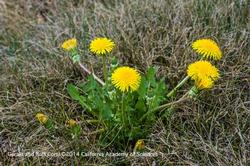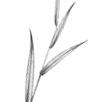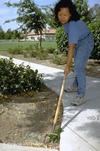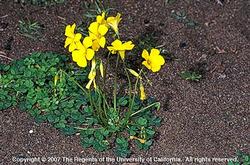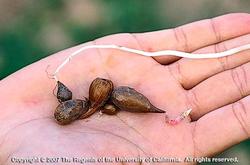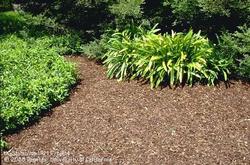Spring at Last, But Those WEEDS
Tips on Controlling Common Weeds
by Diane Allen
It’s wonderful to see spring bulbs and flowers beginning to emerge. But whether you have a garden in pots or in the ground, you may also be wondering how to get rid of the weeds coming up at the same time!
There are hundreds of varieties of weeds that grow in northern California, but really only three main categories (broadleaf, grasses, and sedges). Below are descriptions of each category:
| Broadleaf Leaves are wide, and veins branch out in different directions. |
| Grasses Leaves are narrow, arranged in sets of two; stems are rounded or flattened. |
| Sedges Leaves are narrow, arranged in sets of three; stems are triangular in cross-section. |
While identifying which weed you have is important in finding how to control it, you may not have the time or inclination to research weeds you do not recognize. In this blog, we give you a few general key pointers to help you control and prevent the most common garden spring weeds.
How to remove weeds?
There are two main ways to remove weeds: 1) manually, by hand pulling or using a weeding tool, or 2) chemical treatment.
1)Pulling or using a weeding tool: For home gardening, pulling weeds by hand or using a weeding tool can be simple and effective, especially to remove weeds with long roots. Hoes or other long handled tools are good for surface weeds with short roots.The following video link shows some of the other tools available to help remove weeds, and demonstrates different methods using dandelion weeds as an example.
Key tip: Remove all of the roots. Many perennial weeds like dandelions have a long taproot. Be sure you remove all of that root, or the weed may just grow back. It’s easiest to do this when the ground is damp. If you’re working in dry or compact soil, using a weed removal hand tool helps grab the root and lift it out.
For those of you wanting to remove Buttercup oxalis (Bermuda buttercup; Oxalis pes-caprae) remember to remove not only the leaves and stems but also the bulbils (small bulbs) at the bottom of the stems. New plants can grow from these bulbs left in the soil. There may seem to be an unmanageable amount of the bulbils, but even removing a large number of the plants and bulbils will help reduce the number of plants and their spread to new areas.
2) Chemical treatment: While chemical treatment with commercial herbicides may be appropriate for serious infestations in large areas, herbicide chemicals also can cause potential harm to bees and other pollinators, as well as to beneficial insects that keep down the population of other pests. In home gardens, chemical treatments are usually not needed as manual removal is typically sufficient.
When to remove them?
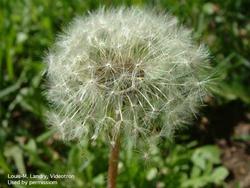
But don’t despair if you can’t get to those weeds only when they are small. Weeds can be removed when mature; just take extra care to remove all of the roots. You may have to dig down a bit further to completely remove large mature weed plants. Be sure to wear gloves; some weeds are prickly or have sap that can be an irritant to the skin.
How to prevent them?
While you undoubtedly see chemical treatments designed to prevent weeds (“pre-emergent” treatments), applying mulch is a very effective way to minimize future weed growth.
What is mulch? It is any material applied to the surface of your soil. These can be inorganic or organic. These materials prevent weed growth by blocking the sun from reaching the soil. This keeps the soil cooler and prevents light from reaching sprouting weed seedlings. To prevent weeds from emerging it’s important to use a mulch of small enough size, or deep enough, to stop sunlight from penetrating the soil
Inorganic mulches include rocks, gravel, or landscape fabrics. Since sunlight can enter the spaces between rocks and gravel (especially if larger than 1.5 inches), these materials should be applied 3-5 inches deep to keep light from reaching the soil. They can be most effective if a landscape fabric is first laid onto the soil, with the rocks or gravel applied on top of the fabric.
Organic mulches are natural materials such as wood chips, straw, and seed hulls. Organic mulch not only prevents weeds but also conserves moisture in your soil and improves soil structure and nutrient levels. To prevent sunlight from reaching the soil and emerging weeds, apply at least 2-3 inches of small-sized organic mulch (e.g. wood chips smaller than one inch in diameter). For larger materials (e.g. larger wood chips 1.5 inches in diameter), apply 5-6 inches of material. Remember to keep mulch about a foot away from tree trunks, as the mulch may prevent the soil from drying near the trunk and contribute to tree root problems.
When organic mulch is promptly applied after removing weeds and their roots, the only weed management activities that may be necessary are occasional hand-pulling or shallow hoeing of weed seedlings and periodic reapplication of organic mulch. Each spring you will notice fewer weeds emerge, as each year there will be fewer weeds producing seeds or bulbs to germinate. It may take a few years of manual removal and replenishing the mulch, but eventually, there will be few weeds to remove.
Resources
The Master Gardeners of Alameda County website, and related University of California websites and videos, have more information for you on general weed control and details for individual types of weeds. Here are some to take a look at:
Types of Weeds
- Key to identifying weeds https://ipm.ucanr.edu/TOOLS/TURF/PESTS/weedkey.html
- Information on specific weeds https://ipm.ucanr.edu/TOOLS/TURF/PESTS/broadlfsp.html
General Weed Control, before and after planting
Woody Weeds and Difficult to Control Shrubs and Grasses:
Video on Weed Control
- Integrated Pest Management of Weeds https://www.youtube.com/watch?v=ISw9Uk5eaXE
Types of mulch
- https://ipm.ucanr.edu/PMG/GARDEN/ENVIRON/mulches.html
- https://ipm.ucanr.edu/PMG/GARDEN/ENVIRON/mulchtbl.html
Sheet mulching for large areas
Want to learn more?
This blog post is brought to you by the Help Desk of the UC Master Gardeners of Alameda County. Subscribe to our blog!
Have a gardening question? We'll help. You can reach us by:
- Emailing acmg@ucanr.edu. Please include a photo of the problem, if you can, plus your name, phone number, city and a description of the problem.
- Using our online form.
- By phone, during our office hours, 10 am to noon Wednesday and 11 am to 1 pm Thursday: 510-670-5645. At other times, please leave a message and we'll return your call during our office hours.
- In person at our Hayward office, during our office hours, only by appointment.


